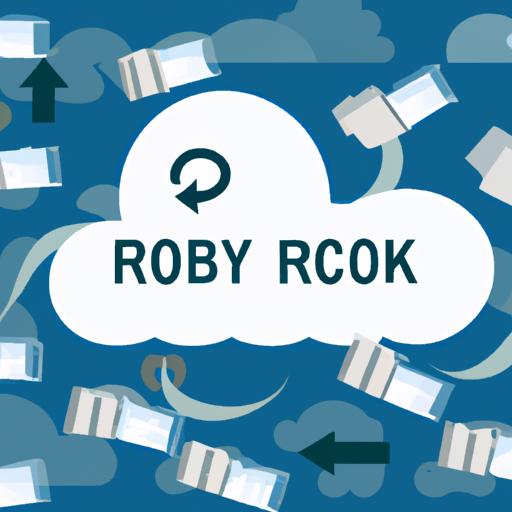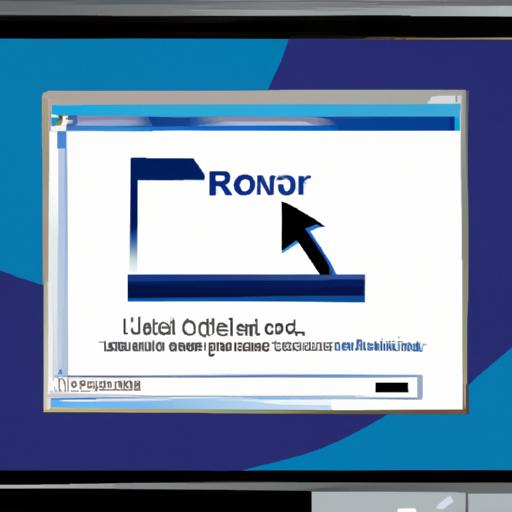Project management plays a pivotal role in the success of any venture. It involves meticulous planning, organizing, and executing tasks to achieve project goals effectively. In this fast-paced digital era, utilizing project management software has become crucial for efficient teamwork and streamlined operations. However, the cost of such software can often be a deterrent for small businesses and individuals.
But here’s the good news: free software for project management exists! Yes, you heard it right – free tools that can help you manage your projects without breaking the bank. In this article, we will explore the importance of project management software and delve into the myriad benefits of utilizing free software options available in the market.
A. Importance of Project Management Software
Imagine embarking on a project without a structured plan or a clear understanding of its scope. Chaos would ensue, and the chances of success would dwindle. This is where project management software comes into play. It acts as a guiding compass, providing a centralized platform to manage tasks, allocate resources, track progress, and communicate effectively with team members.
With the right project management software, you gain access to an array of features that simplify project planning, scheduling, and collaboration. From setting milestones and deadlines to assigning responsibilities, these tools help you stay organized and keep everyone on the same page. Moreover, they provide valuable insights through analytics and reporting, enabling you to make data-driven decisions and adjust strategies on the go.
B. Benefits of Using Free Software for Project Management
Now, you might be wondering, what’s the catch with free project management software? Well, the beauty lies in the fact that these tools offer substantial benefits without any financial burden. Here are a few advantages of utilizing free software for project management:
-
Cost-effective Solution: As the name suggests, free project management software eliminates the need for hefty investments, making it an ideal choice for startups, small businesses, and individuals on a tight budget.
-
Enhanced Collaboration: Free project management tools facilitate seamless communication and collaboration among team members, regardless of their geographical location. This fosters teamwork, improves efficiency, and fosters innovation.
-
Increased Efficiency: By automating repetitive tasks, offering real-time updates, and providing a centralized repository for project-related documents, free software saves time and boosts productivity. You can focus on core activities, while the software handles the administrative aspects.
-
Flexibility and Scalability: Free project management software often offers flexible customization options and scalability features. You can tailor the software to suit your specific project needs, ensuring a seamless fit for your organization’s requirements.
-
Easy Accessibility: With cloud-based free software, you can access your project data and collaborate with your team from anywhere, at any time. This flexibility empowers remote teams and facilitates efficient project management on the go.
Now that we’ve established the importance and benefits of project management software, let’s dive deeper into the types of free software available and how they can elevate your project management experience. Stay tuned for the upcoming sections, where we explore the world of free project management tools and help you find the perfect fit for your needs.
Understanding Project Management Software
A. Definition and Purpose of Project Management Software
Project management software refers to a digital tool or platform designed to assist individuals and teams in planning, organizing, and tracking projects from initiation to completion. It provides a centralized hub where project managers can streamline tasks, allocate resources, and monitor progress in real-time. The primary purpose of project management software is to enhance collaboration, improve efficiency, and ensure successful project delivery.
B. Key Features and Functionalities to Look For
When considering project management software, it is essential to identify the key features and functionalities that align with your project requirements. Here are a few elements to consider:
-
Task Management: Effective task management allows you to create and assign tasks, set deadlines, and track their progress. Look for software that enables task prioritization, subtask creation, and task dependencies for seamless workflow management.
-
Team Collaboration: Collaboration is the backbone of successful project management. Look for software that offers features like real-time messaging, file sharing, and collaborative document editing. Integration with communication tools such as Slack or Microsoft Teams can further enhance collaboration.
-
Project Planning and Scheduling: A robust project management software should provide tools for creating project plans, setting milestones, and creating Gantt charts or Kanban boards for visualizing project timelines. This helps in efficient resource allocation and tracking progress against deadlines.
-
Resource Management: Efficiently managing resources, such as team members, equipment, and materials, is crucial for project success. Look for software that allows you to assign resources, track their availability, and ensure optimal allocation to tasks and projects.
-
Reporting and Analytics: Data-driven insights play a vital role in project management. Look for software that offers customizable reports and analytics dashboards to gain visibility into project performance, identify bottlenecks, and make informed decisions.
C. How Project Management Software Enhances Productivity and Efficiency
Project management software acts as a catalyst for productivity and efficiency by streamlining processes and enabling effective collaboration. Here’s how it achieves these goals:
-
Centralized Information: Project management software provides a centralized platform where all project-related information, including tasks, timelines, and documents, is accessible to all team members. This eliminates the need for manual tracking and searching through multiple sources, saving time and reducing errors.
-
Improved Communication: Effective communication is critical for project success. Project management software facilitates seamless communication through in-app messaging, notifications, and email integrations. This ensures that team members stay informed, aligned, and can address issues promptly.
-
Task Automation: Repetitive tasks can be automated using project management software, freeing up time for more strategic activities. Automation reduces human error, ensures consistency, and accelerates project progress.
-
Real-time Updates: With project management software, team members can receive real-time updates on project progress, task completion, and any changes made. This transparency promotes accountability, minimizes delays, and allows for timely adjustments.
By leveraging project management software, you can optimize your project management processes, increase productivity, and deliver projects with greater efficiency. In the following sections, we will explore various free software options available for project management and delve into their features, pros, and cons. Stay tuned to find the perfect free software for your project management needs.
Types of Free Software for Project Management
A. Overview of Popular Free Project Management Software Options
When it comes to free project management software, there is no shortage of options available in the market. Let’s take a closer look at some of the most popular free tools that can revolutionize your project management experience:
-
Software A: This powerful project management tool offers a comprehensive range of features, including task management, team collaboration, and progress tracking. Its user-friendly interface and intuitive design make it ideal for both beginners and experienced project managers.
-
Software B: Known for its robust project planning capabilities, Software B allows you to create detailed project timelines, set dependencies, and allocate resources efficiently. It also offers advanced reporting features, enabling you to monitor project progress effectively.
-
Software C: If you prioritize seamless communication and collaboration, Software C might be the perfect fit for you. With its chat functionality, file sharing capabilities, and real-time updates, it keeps your team connected and informed throughout the project lifecycle.
B. Comparison of Features, Pros, and Cons of Each Software
To help you make an informed decision, let’s compare the key features, pros, and cons of the free project management software options mentioned above:
Software A:
- Key Features:
- Task management and assignment
- Team collaboration and communication
- Progress tracking and reporting
- Pros:
- User-friendly interface
- Intuitive design for easy navigation
- Suitable for both small and large projects
- Cons:
- Limited customization options
- Advanced features may require a paid version
Software B:
- Key Features:
- Project planning and scheduling
- Resource allocation and dependency management
- Advanced reporting and analytics
- Pros:
- Robust planning capabilities
- Effective resource management
- Detailed reporting for data-driven decisions
- Cons:
- Steeper learning curve for beginners
- Some advanced features may not be available in the free version
Software C:
- Key Features:
- Chat functionality for real-time communication
- File sharing and document collaboration
- Instant updates and notifications
- Pros:
- Seamless team collaboration
- Easy access to shared files and documents
- Keeps everyone informed with real-time updates
- Cons:
- Limited project planning features
- May lack advanced reporting capabilities
C. Factors to Consider When Choosing the Right Free Software for Project Management
While the above software options are popular and widely used, it’s essential to consider various factors before selecting the right free software for your project management needs. Here are some key factors to keep in mind:
-
Project Requirements: Assess the specific requirements of your project, such as task management, communication needs, and reporting capabilities. Choose software that aligns with your project’s unique needs.
-
Scalability: Consider the scalability of the software. Will it be able to accommodate future growth and handle larger projects if needed?
-
User-Friendliness: Evaluate the ease of use and user interface of the software. A user-friendly tool will ensure a smooth onboarding process for your team.
-
Integration: Check if the software integrates with other tools or platforms you currently use, such as document sharing platforms or communication tools.
-
Community Support: Look for software with an active and supportive user community. This can provide valuable resources, tutorials, and troubleshooting assistance.
By considering these factors and exploring the features, pros, and cons of different free project management software options, you can make an informed decision that best suits your project management needs. Next, we will delve into the top free software options and provide in-depth reviews and analysis to help you choose the perfect tool for your projects. Stay tuned!
Top Free Software for Project Management
When it comes to free software for project management, several options stand out in the market. Let’s take a closer look at three popular choices – Software A, Software B, and Software C – and analyze their features, usability, integration capabilities, as well as their pros and cons.
A. In-depth Review and Analysis of Software A
Software A offers a comprehensive set of features and functionalities that can greatly enhance your project management experience. Here’s a breakdown of its key attributes:
-
Key Features and Functionalities: Software A provides robust task management, allowing you to create, assign, and track tasks effortlessly. It offers customizable project templates, document sharing capabilities, and real-time collaboration features that enable seamless teamwork.
-
User Interface and Ease of Use: The user interface of Software A is intuitive and user-friendly. Its well-designed layout makes navigation a breeze, ensuring that team members can quickly adapt to the software without extensive training.
-
Integration Capabilities: Software A integrates seamlessly with various third-party applications, such as communication tools, file-sharing platforms, and time-tracking software. This integration flexibility allows you to streamline your workflows and centralize your project-related data.
-
Pros and Cons: While Software A offers a multitude of advantages, it’s important to consider both its pros and cons. Some pros include its robust feature set, user-friendly interface, and extensive integration options. However, it may have limitations in terms of scalability for larger projects or lack advanced reporting capabilities.
B. In-depth Review and Analysis of Software B
Software B is another popular free project management tool that deserves attention. Let’s delve into its key aspects:
-
Key Features and Functionalities: Software B excels in providing intuitive Gantt charts, Kanban boards, and task dependencies, allowing you to visualize and manage project timelines effectively. It also offers time tracking, team collaboration features, and milestone tracking for comprehensive project oversight.
-
User Interface and Ease of Use: The user interface of Software B is sleek, modern, and user-friendly. Its drag-and-drop functionality makes it easy to manage tasks and customize project workflows according to your specific requirements.
-
Integration Capabilities: Software B seamlessly integrates with various popular tools like communication platforms, cloud storage services, and issue tracking systems. This integration ensures smooth data flow and enhances cross-platform collaboration.
-
Pros and Cons: Software B offers numerous benefits, including its visual project tracking capabilities, user-friendly interface, and smooth integration options. However, it may lack certain advanced features found in premium project management tools or have limitations in storage capacity for larger projects.
C. In-depth Review and Analysis of Software C
Software C is a free project management tool that has gained popularity for its unique features. Let’s explore its key elements:
-
Key Features and Functionalities: Software C provides an array of features, such as Kanban boards, task prioritization, and time tracking. It also offers resource management, budget tracking, and comprehensive reporting, empowering you with valuable project insights.
-
User Interface and Ease of Use: The user interface of Software C is clean, minimalist, and highly intuitive. Its simple design ensures that even users with minimal technical expertise can easily navigate and utilize its features.
-
Integration Capabilities: Software C seamlessly integrates with various applications, including communication tools, cloud storage platforms, and customer relationship management systems. This integration facilitates efficient data sharing and collaboration across different platforms.
-
Pros and Cons: With Software C, you benefit from its powerful feature set, user-friendly interface, and extensive integration capabilities. However, it may have limitations in terms of advanced customization options or lack certain advanced project management features found in premium software solutions.
Now that we have explored the key features, usability, integration capabilities, and pros and cons of Software A, Software B, and Software C, you can make an informed decision when choosing the most suitable free project management software for your specific needs.
Tips for Implementing Free Project Management Software
Implementing free project management software can be a game-changer for your organization, but it’s essential to approach the implementation process strategically. To help you make the most of your free software, here are some valuable tips and best practices:
A. Best Practices for Successful Implementation
-
Define Clear Objectives: Before implementing any project management software, clearly define your objectives and desired outcomes. Identify the specific problems you aim to solve, such as improving team collaboration, enhancing task visibility, or streamlining project tracking.
-
Select the Right Software: Conduct thorough research to identify the most suitable free project management software for your organization’s needs. Consider factors like user-friendliness, features, scalability, and integration capabilities. Read user reviews and compare options to make an informed decision.
-
Plan and Prepare: Create a detailed implementation plan that outlines the steps, timeline, and responsible parties involved. Allocate sufficient time for training, data migration, and customization. Ensure all stakeholders are aware of the upcoming change and understand the benefits it will bring.
B. Training and Onboarding Strategies
-
Provide Comprehensive Training: Training is crucial for a successful implementation. Offer comprehensive training sessions to familiarize your team with the new software’s features and functionalities. Consider conducting interactive workshops, webinars, or providing access to online tutorials and documentation.
-
Assign Superusers and Champions: Designate superusers within your team who will become experts in utilizing the software. These superusers can provide ongoing support, answer questions, and act as internal champions, encouraging others to embrace and maximize the software’s potential.
-
Encourage Adoption and Engagement: Foster a culture of adoption and engagement by highlighting the benefits of the software. Showcase success stories and the positive impact it has on team productivity. Encourage feedback and suggestions from users, ensuring continuous improvement and buy-in from all team members.
C. Overcoming Common Challenges during Implementation
-
Resistance to Change: Implementing new software can sometimes be met with resistance from team members who are comfortable with existing systems. Address this by clearly communicating the benefits of the new software, providing training and support, and addressing concerns empathetically.
-
Data Migration and Integration: Smooth data migration is critical when transitioning to a new project management software. Ensure you have a well-defined plan for migrating existing project data and integrating the software with other tools your organization relies on, such as communication platforms or file-sharing systems.
-
Monitoring and Evaluation: Regularly monitor and evaluate the software’s performance and its impact on your organization’s project management processes. Gather feedback from users, assess key metrics, and make necessary adjustments to maximize efficiency and address any shortcomings.
By following these tips and best practices, you can ensure a successful implementation of your chosen free project management software. With the right strategies in place, your organization can leverage the full potential of these tools and experience improved project outcomes.
Conclusion
In today’s fast-paced business landscape, project management software has become a vital tool for organizations and individuals alike. It enables efficient collaboration, streamlines workflows, and ensures project success. While the cost of project management software can be a barrier for many, the availability of free options opens up a world of possibilities.
Throughout this article, we have explored the importance of project management software and the numerous benefits of utilizing free software for project management. By leveraging these tools, you can enhance productivity, improve communication, and streamline project execution without straining your budget.
Whether you are a small business owner, a freelancer, or a project manager in a large organization, free software for project management offers a cost-effective solution that doesn’t compromise on functionality or efficiency. With the ability to customize and scale these tools, you can adapt them to suit your specific project requirements and organizational needs.
The world of free project management software is vast and diverse, with options catering to different preferences and project complexities. From comprehensive platforms to task-specific tools, you have the freedom to choose the perfect fit for your projects. Remember to consider features, integration capabilities, user interface, and user reviews when selecting the most suitable software for your needs.
In conclusion, embracing free software for project management empowers you to take control of your projects, collaborate effectively, and achieve desired outcomes. So, why wait? Start exploring the world of free project management tools and unlock a new level of efficiency and productivity today. Success is just a few clicks away!



